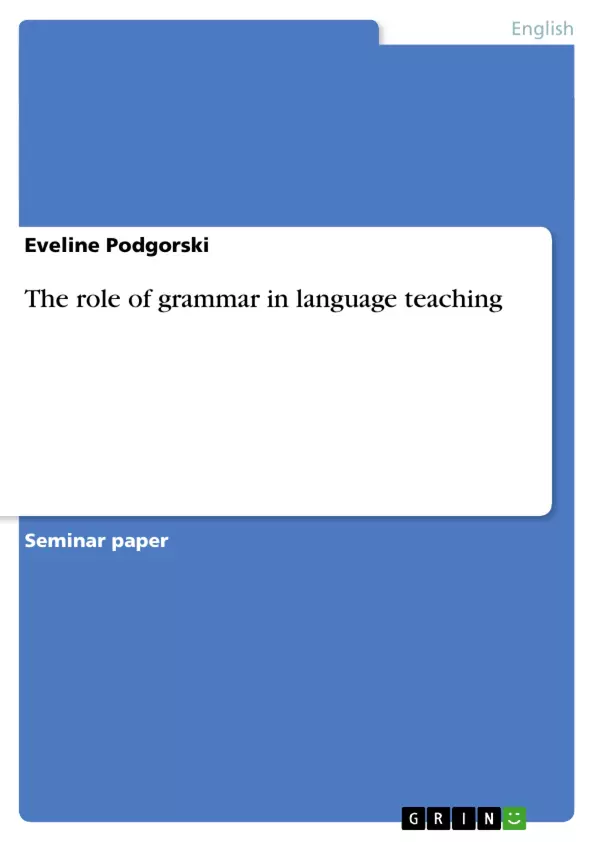Learning a new language always implies learning its grammar. In what depth should then teaching grammar be part of the teaching unit and what important aspects of the Second Language Acquisition should be considered by teachers in the classroom? There is also the question how the students in general acquire grammatical structures.
This paper first gives an introduction into the history of language teaching which is followed by an overview of different aspects of the Second Language Acquisition and an example for a study on the Teachability Hypothesis. I chose this study because it was a subject of interest in the seminar “Issues in Applied Linguistics” and was the topic my group worked on for a presentation. To show how grammar teaching is understood in the classroom, a summary of the different options in language teaching is given afterwards. The conclusion at the end not only serves as a summary of the paper but also sums up the answers to the questions asked above and shows the problems behind them. It is followed by a bibliography and an appendix.
Inhaltsverzeichnis (Table of Contents)
- Contents and structure of the term paper
- A historical introduction into grammar teaching:
- Second Language Acquisition
- The Interlanguage
- The teachability of grammar
- A study on the Teachability Hypothesis
- Different options in language teaching
- Conclusion
Zielsetzung und Themenschwerpunkte (Objectives and Key Themes)
This paper investigates the role of grammar in language teaching, examining the historical development of grammar instruction and exploring key concepts in Second Language Acquisition (SLA). It also delves into the teachability of grammar and the various approaches to grammar teaching in the classroom.
- The historical evolution of grammar teaching methods
- Key concepts in Second Language Acquisition, including the Interlanguage and the Teachability Hypothesis
- The impact of learner factors and teaching programs on language acquisition
- Different approaches to grammar teaching in the classroom
- The role of error correction in second language development
Zusammenfassung der Kapitel (Chapter Summaries)
- Contents and structure of the term paper: This chapter introduces the paper's focus on the role of grammar in language teaching, outlining the key questions and topics to be addressed.
- A historical introduction into grammar teaching: This chapter provides a historical overview of grammar teaching methods, tracing the evolution from Latin-based instruction to more modern approaches like the Natural Method and the Direct Method. It also discusses the "zero option" and the current trend of combining different methodologies.
- Second Language Acquisition: This chapter explores the influence of various factors on second language acquisition, including transfer from the first language, the role of the learner's language development, and the impact of teaching programs. It also addresses the issue of error correction and its role in language development.
- The Interlanguage: This chapter defines the Interlanguage, a production in every second language learner, and discusses its flexibility and variety across different linguistic features.
Schlüsselwörter (Keywords)
The paper's primary focus is on grammar teaching, Second Language Acquisition (SLA), the Interlanguage, the Teachability Hypothesis, and the various approaches to grammar instruction in the classroom. It also highlights the importance of learner factors, teaching programs, and error correction in the language learning process.
- Quote paper
- Eveline Podgorski (Author), 2006, The role of grammar in language teaching, Munich, GRIN Verlag, https://www.grin.com/document/83868



